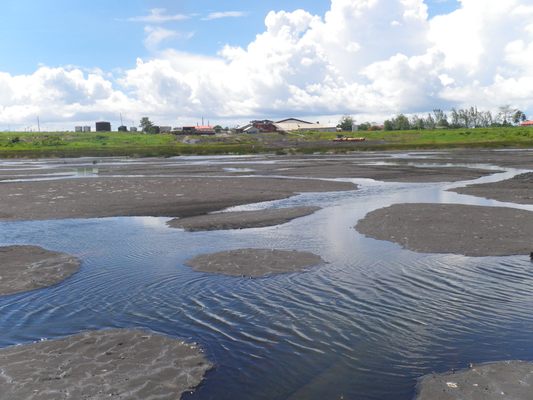About
Sometimes, it feels soft and spongy, like the top of a gigantic eraser. At other points, it's more like quicksand. And dotted throughout are breaks in its continuity, revealing water below – not unlike a lake frozen for winter.
It's the surface of Pitch Lake, which is exactly what it sounds like: A lake "made of" pitch. And in most places, it's nearly solid, allowing fascinated visitors to walk along its strange, often unsettling surface.
A more accurate description is that Pitch Lake is a basin in the island nation of Trinidad and Tobago that collects both water and pitch, resulting in a somewhat unreal mixture of the two, at times as thin as regular lakewater, and at others as hard as a rock. Debris such as boulders, fallen trees, and refuse often get caught in the sticky surface, resulting in impromptu works of art as well as warning signs of the lake's actual danger, as the pitch hardens around the object and effectively turns it to stone.
The first European to document Pitch Lake was Sir Walter Raleigh, who encountered it on his search for El Dorado. Raleigh was pleased with the quality of the pitch, describing it as "most excellent good...it melteth not with the sun as the pitch of Norway." Raleigh's expedition ended in infamous failure, but not before he took note of Pitch Lake's ecology: "all of ston pitch or bitumen which riseth out of the ground in little springs or fountaynes and so running a little way, it hardneth in the aire, and coverith all the playne; there are also many springs of water and in and among them fresh water fishe'."
This doesn't stop daring travelers from walking along the surface of the lake, jabbing sticks and rocks into the clingy goo that forms the more stable areas, or even taking a plunge in the open "pools" of water that often form at crevices in the semi-continuous pitch. Long known by locals to be a strange place, Pitch Lake has picked up a bit of a reputation as a tourist attraction, with off-the-beaten-path travelers coming to examine one of the strangest lakes on the planet.
Related Tags
Community Contributors
Added By
Published
June 26, 2012






















